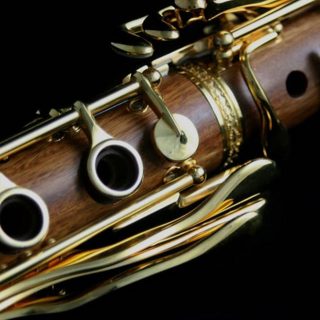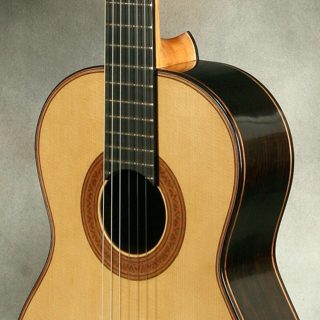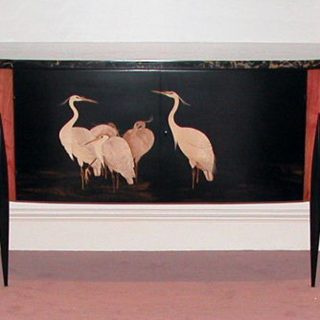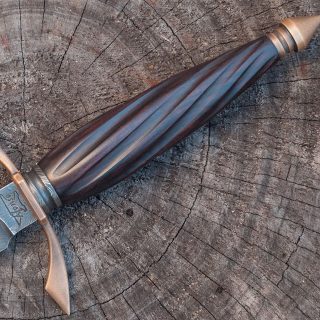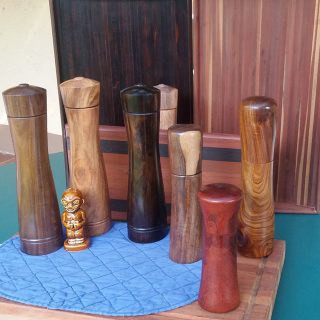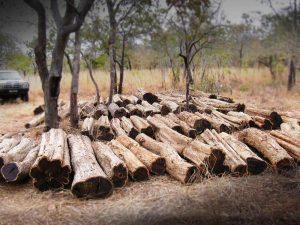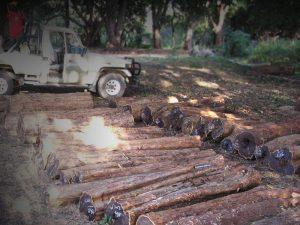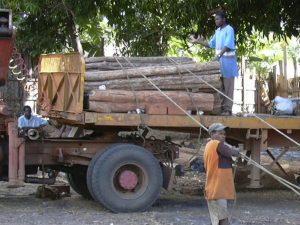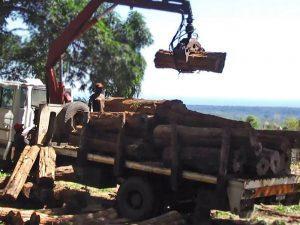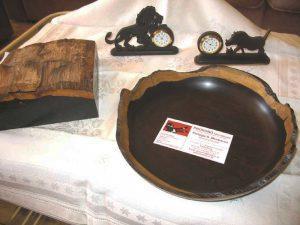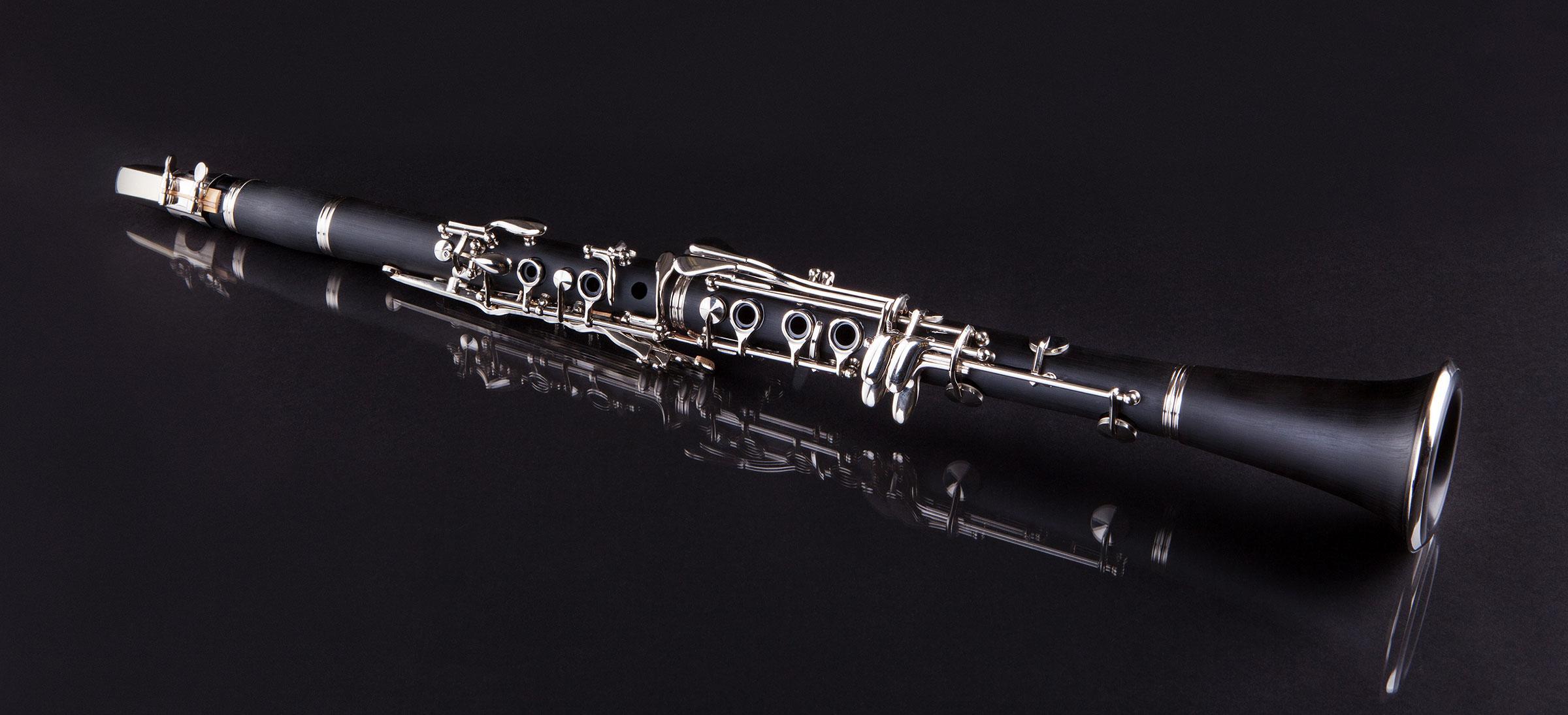
African blackwood squares and bowl blanks for sale
African blackwood, also commonly known as grenadilla or mpingo, is regarded as one of the finest woods for turning. It is exceptionally hard and stable and has a lustrous dark finish.
Subject to limited supply, we offer squares, blocks and scales cut to dimensions for knife handles, as well as musical instruments billets for flutes and barrels for clarinets. We also offer turners’ parts for pens and letter openers.
African blackwood characteristics
- Botanical name: Dalbergia melanoxylon
- Alternative names: mpingo (Tanzania), pau-preto (Mozambique), African blackwood, grenadilla
- Average dry weight: 1270 kg/m3
- Hardness: 16,320 N on the Janka scale
- Extremely dense, brown with dark grain pattern
Applications
“The very best African Blackwood we received since 1956, when we started to keep records!”
~ Verne Q. Powell Flutes Inc., United States
African Blackwood musical grade billets we endeavour to keep in stock
| For woodwinds | |
| African blackwood clarinet sets | Bells 85/85 x 45/45 x 125 Lower joint 36 x 36 x 320 or 36 x 36 x 285 Upper joint 36 x 36 x 245 or 36 x 36 x 230 Barrel 51 x 51 x 80 or 47 x 47 x 80 or still 40 x 40 x 80 |
| African blackwood for bass clarinets |
47 x 47 x 760 and 47 x 47 x 460 or 47 x 47 x 700 and 47 x 47 x 550 |
| African blackwood alto for clarinets | 40 x 40 x 410 |
| African blackwood for oboes | Bells 65 x 65 x 150 or 60 X 60 x 140 Joints 40 x 40 x 285 or 36 x 36 x 270 or still 32 x 32 x 265 |
| African blackwood for English horns | Bells 70 x 70 x 140 Joint 40 x 40 x 400 |
| African blackwood for flutes | 33 x 33 x 380 or 33 x 33 x 330 or still 33 x 33 x 265
30 x 30 x 510 or 30 x 30 x 410 or still 30 x 30 x 325 and 30 x 30 x 300 28 x 28 x 400 or 28 x 28 x 285 or still 28 x 28 x 270 |
| African blackwood for piccolos | 28 x 28 x 250 + 30 x 30 x 150 |
| African blackwood for Highland bagpipes | (HBPs) 14 blanks of 11 different sizes, representing a total of 6.555 dm3
1 X 54 x 54 x 305 + 2 X 51 x 51 x 205 + 1 X 40 x 40 x 385 + 1 X 47 x 47 x 310 + 1 X 47 x 47 x 195 + 2 X 47 x 47 x 160 + 1 X 47 x 47 x 125 + 1 X 47 x 47 x 115 + 1 X 40 x 40 x 310 + 2 X 40 x 40 x 245 + 1 X 40 x 40 x 220 |
| For the Uilleann pipes (Irish pipes) , English pipes, Gaitas (Spanish pipe), Bombarde (French pipe), the section on Folkloric instruments provides the exact dimensions. | |
| African blackwood for stringed instruments | |
| Jumbo | Back: 2 X 560 x 210 x 5 + Sides: 2 X 830 x 130 x 4 |
| Classic | Back: 2 X 530 x 190 x 5 + Sides: 2 X 760 x 110 x 4 |
| Modern | Back: 4 X 530 x 95 x 5 + Sides: 2 X 760 x 110 x 4 |
About African Blackwood
| Botanical name | Dalbergia melanoxylon |
| Family | Leguminosae |
| Local names | mpingo, pau preto |
| English name | African blackwood |
| Distribution | The African blackwood tree is widely distributed in a triangle spanning from South Sudan to Angola to the Eastern Cape in South Africa. |
| The tree | It grows as a bush in most places and, in only a few regions, as a sizeable tree – measuring up to 9 meters (30ft.) in height and 30 cm (12 in.) in diameter, or larger. Experts relate this fact to the behaviour of fauna more than to competition from flora. |
| The wood | The heartwood is dark brown with black streaks. This colour usually predominates so that the general effect is nearly black. The narrow sapwood is light yellow and clearly defined. The wood is exceptionally hard and heavy, with a density ab.1.35 t/m3, (79 lb/ft3). The texture is fine and even. |
| Seasoning | It dries very slowly and tends to split during drying, especially in log form. The application of wax or paint on both log ends is advisable to minimise splitting. |
| Workability | It is extremely hard to cut and process. The use of tungsten carbide tools is required. |
| Use | African blackwood is extremely hard and heavy. Makers of woodwind musical instruments prefer it to ebony because of its fine tonal and acoustic features, stability and resistance to saliva. It is also recognised because of its constant density as the best hardwood for ornamentals and turnery of cues, walking sticks, bobbins, butts of sport weapons, cutlery, knives, technical items, pins, spindles, tools and drumsticks. |
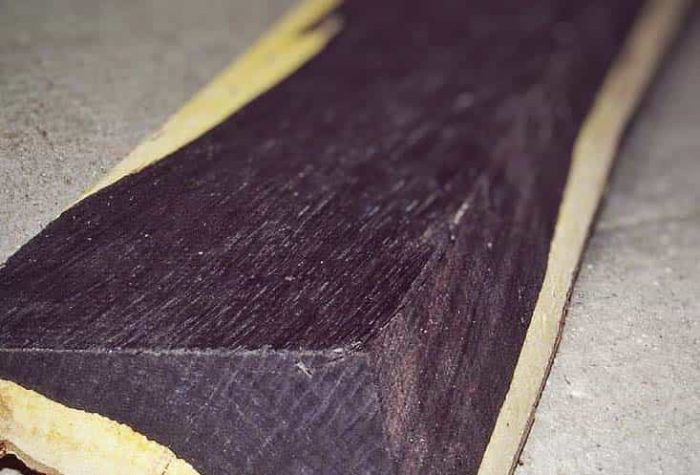
Restrictions on African blackwood supply
In 2017, all Dalbergia, including the Dalbergia melanoxylon, was added to the Convention on International Trade in Endangered Timber Species (CITES) Appendix 2. Trade in this species in now controlled and subject to certification.
The felling, transport, processing, export and import of this wood is now controlled and subject to certification and permits. The endemic region of northern Mozambique and southern Tanzania has been in a situation of armed conflict for more than three years. Respect for conventions and legislation is therefore utopia that many ignore!
Cabo Delgado, Mozambique’s key supply region and port, has been temporarily taken over by jihadists. Disgruntled young people, with no prospect of progress, took control of the region and expelled the Mozambican government army. The young conscripts do not know the region, the language and above all are not motivated to wage war on behalf of the government of Maputo. The distance between Maputo and Mocimba da Praia, the key port taken and controlled by the jihadists, is 1,700 kilometres.
For 13 years, from 2000 to 2012, we bought and processed African blackwood from Cabo Delgado.
The quality of the logs kept declining. The logs on offer became so bad that we stopped buying. We could still buy African blackwood at a high price. It was only good as firewood!
One of our clients, a French oboe maker, informed us that the delivery, from a well-known German supplier resulted in no less than 70% of the billets having to be rejected as unsuitable for his instruments. Soon after, he closed his business.
We don’t play this game. We have understood that the name and reputation of our company come first.
We have researched, discovered and tested two quality wood species as alternatives for African blackwood for woodwind.
Music industry leaders have recognised mopane as the future of the woodwind industry, at least equivalent to African blackwood for clarinets, oboes, English horns and the like.
The sound profile of mopane wood makes it suitable for classical, jazz and modern music.
The resulting diversity relieves pressure on one type of wood (African blackwood) that may become extinct. It also demonstrates that musical sounds do not need to be uniform – ProSono sees this as a mandate. We want to help to promote tonal and botanical diversity!
Our limited supply of African blackwood does not come from Mozambique or Tanzania.
Our suppliers comply with their local legislation. We obtain CITES import and re-export permits. We maintain total control of the supply chain. The countries in question are at peace, which allows for control and respect for conventions and legislation.
Our sources are, however, limited.
African blackwood compared to common ebony (Diospyros spp)
African blackwood (and mopane and leadwood) are denser than ebony and very much less porous. These species have a higher oil content and so aren’t at risk of splitting due to the acidity of saliva.
For specific benefits of elegant wood, please see:
https://www.prosono-hardwoods.com/hardwood-species/leadwood/

